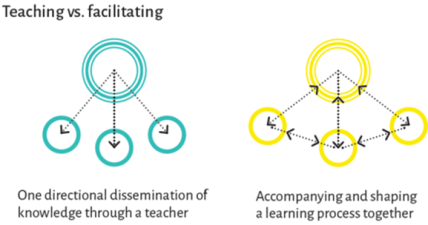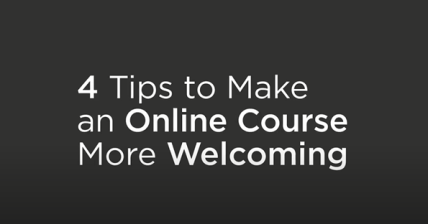
KEY 2 – Create Learning Partnerships
There are many things that educators can do to create meaningful and powerful learning partnerships in their classrooms. In fact, they are far too many to list, I actually recommend that educators implement whatever techniques and methods work best with their style and intended outcomes for the courses they teach.
So, for the purposes of this course, I will focus on four overarching strategies into which educators can plug any of the specific techniques and methods they choose to adopt and activate.
Educators Go First
I know that this first strategy is common knowledge to most educators. However, reiterating the concept of growth as emphasized in my book Why Some Seeds Don't Grow (Miller, 2019), just as every student is inherently trying to grow, every educator has a responsibility to continue their own personal development. It follows that, the greatest growth happens together. In other words, find ways to include and involve your students in your growth process. This will tremendously enhance the trust relationship and culture of ownership that both you and your students have for one another in your classroom.
The premise behind this idea mirrors that of building new relationships in any area of our lives. Think about it, whenever a new relationship begins between two people, someone has to be the initiator. Someone has to begin the interaction by sharing some verbal or nonverbal action (kind words, a smile, a compliment, holding the door open, etc.), that is inviting and puts the other person at ease enough that they are willing to begin a conversation.
In your classroom, the initiator, the person who goes first, is you. Here is one technique that I use to go first. I identify an area in which I could use some help or partnership and share that with my students. Then I explicitly ask my students to partner with me and assist in that area. For example, I have never liked grading papers. As a result, I tend to make a lot of errors and overlook things. I disclose that weakness to my students and ask them to partner with me by thoroughly reviewing assignments that I return for any errors or omissions. As you can imagine, my students are excited to help me as the teacher, and also to find any mistakes that I may have made.
My transparency encourages students to review their graded assignments which by the way helps them to commit that information to their long-term memory. When they think they have found a mistake, it opens an avenue for increasing and enjoyable dialogue, and we are able to talk about the content from a more enriched and enhanced vantage point.
We Are Partners in This Together
The word "partner ship" implies that each party has a responsibility toward one another. Almost as if they use each other (partner) as a means of transportation (ship) to reach their intended an agreed-upon destination. Thus, as an educator you want to make sure that your students feel cared for while in your classroom. This will ensure that they stay engaged and want to be connected to your classroom activities. However, being cared for does not automatically mean the students are being challenged and are learning new content.
Although, we must challenge our students and make sure that our students are learning, it does not mean that we cannot be kind to them at the same time. Finding the balance between caring for and challenging your students is an important strategy to implement as you create effective learning partnerships in the classroom.
Here is one way that I create the cared-for and challenged balance in my course rooms.
Just the Facilitator
In traditional classrooms of the past, many educators were taught that we needed to be in control in order to manage behavior and maintain the respect of the students. Well whether you're talking about building a culturally responsive classroom system or not, that thinking is tremendously outdated.
Your students already know that you are the teacher, and it is your classroom. The authority of your position is understood. Therefore, in a CRCS it is not necessary to spend time establishing your position in the classroom. In fact, since it does not align with creating a partnership, that behavior can be counterproductive.
Avoid being the sage on the stage that provides all the information and has all the answers. Remember, your classroom is culturally responsive and the diversity in the room is an asset. Use it to find the genius in the room. As you transform from being the sage on the stage to facilitating instruction, validating and furthering the critical thinking of your students is a key building block to establishing a culture of healthy learning partnerships.
Adhikari S. (2019). Facilitation Vs teaching: 20 differences we must know! Public Health Notes. https://www.publichealthnotes.com/facilitation-vs-teaching-20-differences-we-must-know/
Value Breeds Self-Efficacy
It can be argued that the most important strategy in key #2 is to make sure the students know that you value them. They should have a clear understanding of their value as human a being via the cultural experiences and diversity that they offer to the classroom setting. They should also have a clear understanding that you value them as scholars who offer meaningful input as they travel the road of mastering the content you are teaching.
When the students feel valued and included, they are more willing to try new things and it is easier to keep them in their zone of proximal development more readily. Their level of self-efficacy skyrockets and as a result they begin to instinctively operate in a growth mindset.
The following video (4 Tips to Make an Online Course More Welcoming) is somewhat technical but shares four powerful tips that you can apply to make the students in your classroom feel more valued and welcomed.
Educause (2019, October 7). 4 Tips to Make an Online Course More Welcoming. YouTube. https://www.youtube.com/watch?v=-WYGYhs3uFo


